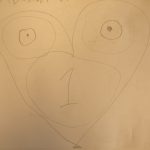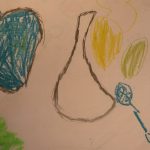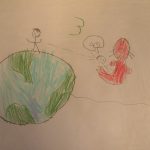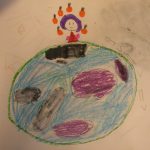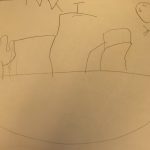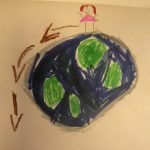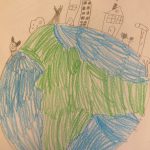Our assumptions about technology and about learning
Dear class,
In your auto-e-ography’s, I noted that many of you chose to recall autobiographical experiences that were based on a classroom event. Similarly, in reading all of your posts in this week’s forum, “Unpacking assumptions about technology and learning”, you have chosen to draw upon your experience as educators and students in classrooms discussing how we could (or should use) technology for learning math and science. Please continue with exploring creative and intriguing subject headers that invite reading of the posts. I personally have read each of your posts and wished to share collectively several common themes about educational technologies that appear to have emerged. You may have spotted others as well-so feel free to share these too in the forum itself.
Many of you commented on how important it was to consider the role of the technology in the classroom and not assume that the relationship to learning is self-evident. A good use of digital technology requires a good plan around the use of the digital technology, such as the strategic district and school-wide planning articulated by Michelle, the planned study guides for individual students articulated by Darren. As Michelle wrote, “To solely rely on these [software] programs would be detrimental to not only my students’ learning but also eventually to their motivation to learn.” A similar sentiment was echoed throughout the posts that we should not incorporate technologies for the sake of technology alone: Technology is not a magic gadget that improves lessons on its own (Catherine); good technology not merely screen time for the sake of screen time (Dana); and, technology can also not be used as a stand alone lesson or be regarded as providing a lesson in and of itself (Allison).
Herein too lies an opportunity for us to imagine how digital technology can be integrated into the learning experience. Several of you offered images of how technology could foster learning in math or science. Josh, for example, suggested that students could inquire into their understanding of the phases of the moon using an interactive digital model: “They would also be able to test their own (mis)conceptions, like the irregular orbits Heather drew, the clouds causing the phases of the moon, etc. – the act of which might help jostle those long-held views from their entrenched positions.” And, Lawrence described, “[P]roviding students a set of challenges that involve drawing circles, tangents, chords, and inscribed angles, the students both define each of the terms as well as discover the relationships between them. These challenges are laid out so that students can progress through them at their own pace. The [software] program itself, being rooted in accurate geometry, allows students the freedom to explore and create any shape or angle, and the fundamental geometric rules will still apply. There is no concern of an inaccurate circle or angle creating confusion and students are free to test their theories to see if there are exceptions. Lastly, the app greatly reduces the time required to accomplish these tasks as shapes, lengths, and angles are accurately drawn and measured.” There were more thick descriptions in your posts (c.f. Stephanie and the pulley system) and they really helped us to “see” in some detail what your ideas on good uses of technology for learning science and math learning.
The assumption that digital technology has some affordances for learning math or science were also explored, and your visions of technology’s potential were based in part on the value added of the technology. As Stephanie suggested, “A good use of digital technology in the math and science classroom is one that allows students to engage in ideas and learning in ways that would not be possible without the technology. Technology should open possibilities by removing or reducing limitations.” And, yet Mary presented us with a reminder: “To be able to see the liquid in the container, touch the liquid that formed on the outside of the container, and make observations about the temperature of the water, container, surrounding environment and so on, just seems to be irreplaceable to me.” In terms of special affordances for the domain of science and math, computer simulations were mentioned among other domain specific applications, including math apps (Dana) and computational math games (Catherine, Mary, and others) to name a few. In addition, several of you noted how quickly these digital technologies help to perform certain tasks [“I still find student’s skills improve more using “computational games” on the computer than using flash cards” (Catherine)], while others suggested certain processes could be fostered in the classroom with the technology. To sample just a few, these processes of science and math included: manipulating variables with computer simulations (Stephanie, Josh), cross-checking research online (Gloria), visualizing “concepts” (Darren), manipulating a 3D model (Anne), zooming into models of the universe at large scales (Daniel), animating the learning process (Dana), and testing hypotheses (Michelle) and testing the veracity of misconceptions (Josh). Gloria and Stephanie prompted us to consider the diversity of learners in the environment as we engage in the processes of science and math.
Several of you emphasized how conceptual change in particular may be supported with the introduction of technology-enhanced experiences. The words misconceptions (Stephanie, Jessica, Vibhu, Daniel), prior knowledge (Anne), [Heather’s] model (Gloria and Josh), ZPD (Jessica), were all used to articulate learning. Your ongoing facility with these terms reflects several of our readings in Module A will be important for the final assignment and posts to describe learning.
Thank you for unpacking some of your assumptions to start about technology as we embark on an exploration of technology in the math and science classroom. Our prior experiences, coupled with our assumptions and beliefs create a lens with which we view learning and teaching with educational technologies. I now encourage you to begin to think about how your unpacking assumptions have brought to the surface several areas of inquiry about educational technology in the math and science classroom that you might like to pursue further in this course for your interviews and for your framing issues assignment.
Thank you,
Samia
